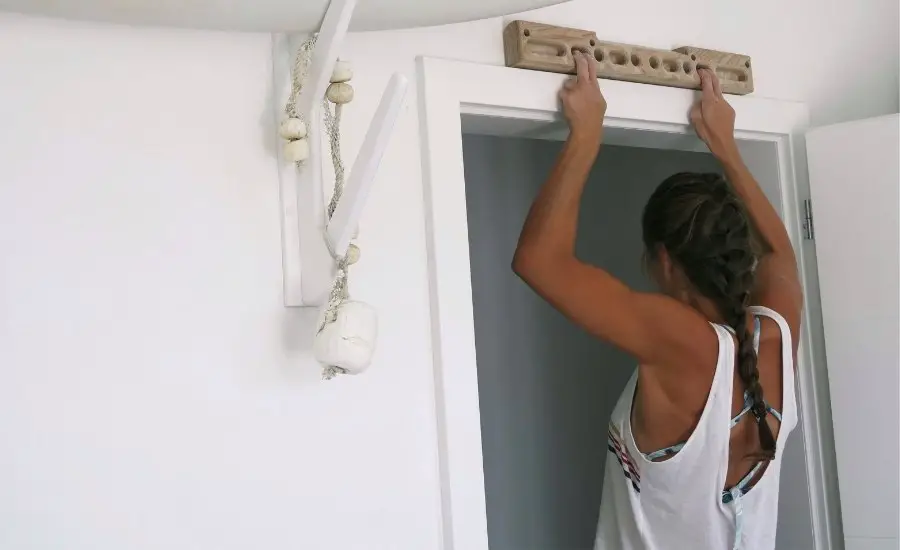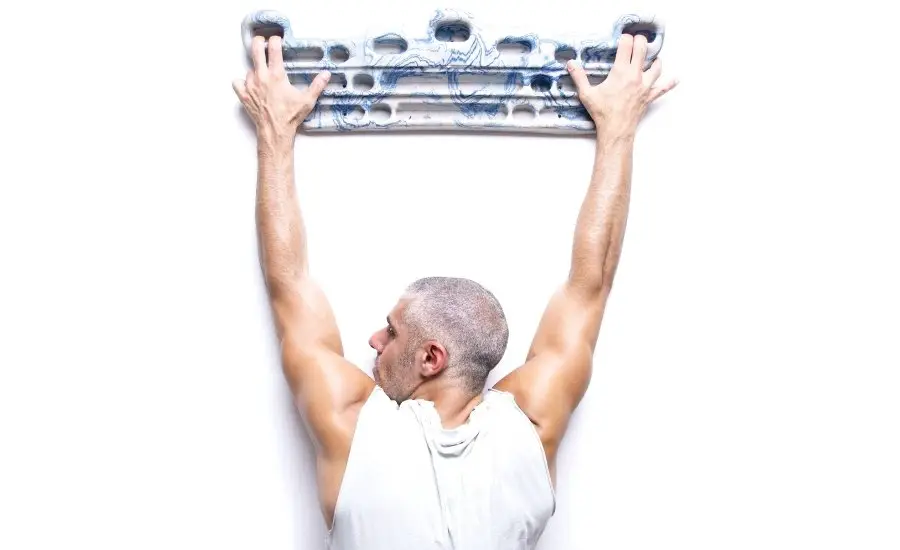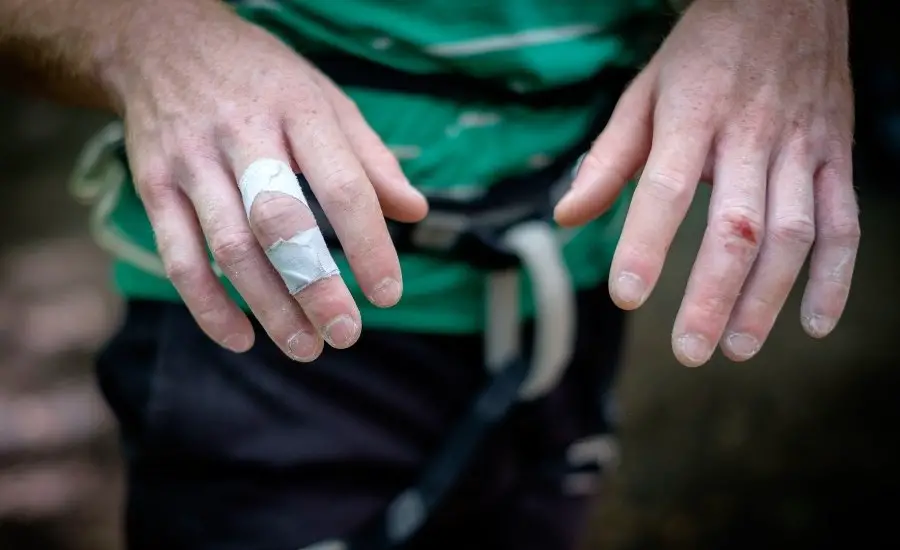Hangboarding, also known as fingerboarding, is a very common training technique and is employed by top tier climbers all over the world. However, it is also known to be quite dangerous in some circumstances. This begs the question: when exactly is it worth it to hangboard? I did some research on the topic and this is what I found out:
As a general rule, hangboarding (fingerboarding) is worth it for experienced climbers who have plateaued and can perform the exercise properly. Hangboarding is not worth it for climbers with less than one year of climbing experience or anyone under the age of 18 due to the increased injury potential.
If done properly, hangboarding is an incredibly effective training tool for climbers to increase their performance. That said, if it is done too early in one’s climbing career or with improper form, it can lead to very serious injuries. This article details exactly when hangboarding is worth it.
If you are interested in seeing what the current prices are for the most popular rock climbing training aids, you can find them on Amazon by clicking here. Using the Amazon affiliate link above and/or other links in the article helps support this website.
Benefits of Hangboard (Fingerboard) Training

Several studies have been conducted analyzing the effects of hangboard training on climbers. These have found that hangboarding provides significant improvement to a climber’s grip endurance, grip strength, and climbing performance.
Increased Grip Endurance
Hangboarding has been found to increase grip strength in advanced rock climbers.
A study conducted by Eva Lopez-Rivera titled Comparison of the Effects of Three Hangboard Strength and Endurance Training Programs on Grip Endurance in Sport Climbers was published in the Journal of Human Kinetics.
It analyzed the effects of three different hangboard training programs on 26 advanced sport climbers (average climbing ability of 7c+/8a) over 8 weeks.
It found that hangboard training significantly increased the climber’s grip endurance, especially when using an intermittent dead hang training structure.

Increased Grip Strength
Along with grip endurance, hangboard training has been documented to increase the overall grip strength of climbers.
A study conducted by Saskia Mundry titled Hangboard training in advanced climbers: A randomized controlled trial was published in Scientific Reports.
It analyzed the effects of hangboard training on 30 intermediate to advanced climbers over the span of a 8-week training protocol. It concluded:
“Compared to a control group, maximizing weight in hangboard training with an 8-week protocol is superior in terms of grip strength advancement in recreational climbers.”
Saskia Mundry, “Hangboard Training in advanced climbers: A randomized controlled trial”
Improved Climbing Performance
Climbing relies heavily on a climber’s grip strength and endurance. You would think that improving these metrics would improve overall climbing performance too.
Luckily, studies have been conducted to investigate the direct relationship between hangboard training and climbing performance.
A master’s thesis study was conducted by Angie Kingsley titled The effects of hangboard exercise on climbing performance and grip strength in college age female indoor rock climbers for the University of Wisconsin – La Crosse.
The study analyzed the effects of hangboard training on 21 college aged (18 to 26 years old) females over a 7-week training period. It concluded:
“The 7-week hangboard training program resulted in improved indoor rock climbing performance in college age female rock climbers.”
Angie Kingsley, “The effects of hangboard exercise on climbing performance and grip strength in college age female rock climbers”
Drawbacks of Hangboard (Fingerboard) Training

The main drawbacks to hangboarding are the increased chance of injury and the need to take time off climbing.
Hangboarding has been well documented to be a risky training exercise to increase finger and grip strength in climbers. This is especially the case when performed with improper technique.
The amount of stress and strain placed on the fingers has a high probability of leading to minor superficial injuries and can even cause more significant structural ones.
Superficial Hangboarding Injuries
These are the most common injuries associated with hangboarding. The most common superficial injuries include:
- Blisters
- Skin Tears
- Abrasions
While these do not seem like a big deal, they can prevent a climber from climbing their hardest for 1 to 2 weeks. They can even force climbers to take days completely off to let their skin recover.
Proper skin care and taping up can help prevent the severity of these injuries but will not be 100% effective.

Structural Hangboarding Injuries:
These types of injuries are a lot more serious than the ones listed above. While structural injuries are not as common as the superficial ones, they cause a lot more damage. These include tendonitis, sprains, fractures, tears, etc.
Michael Anderson conducted a study titled “A Novel Tool and Training Methodology for Improving Finger Strength in Rock Climbers” which was published in Procedia Engineering and can be accessed online via ScienceDirect.com.
According to the study, “Hangboarding training often leads to overuse injuries…” which were listed to be:
- Shoulder tendonitis
- Elbow tendonitis
- Wrist tendonitis
- Finger flexor and extensor forearm muscle injuries
- Finger flexor tendon injuries
- Annular pulley injuries
- Interphalangeal joint injuries
Suffering a structural injury will not only hurt and lead to a doctor visit, but it will also take you out of climbing for a substantial amount of time.
You may be forced to sit out for multiple weeks (most likely months) depending on the severity of the injury. Talk about a major setback to your climbing progress.
Proper hangboarding form and training design can help reduce the chance of these injuries from occurring. That said, there is no guarantee you will stay healthy and uninjured even with proper technique and session protocols.
Check out the YouTube video by Dave MacLeod time-stamped below to see the proper techniques to avoid injury while hangboarding.
When Hangboard (Fingerboard) Training is Worth it
A one size fits all answer here is not the best route to go. Every climber is different and unique. However, we can make generalizations about who should hangboard by grouping the climbers into three different levels: inexperienced and beginner climbers, intermediates, and advanced.
Inexperienced and Beginner Climbers
Lets keep this short, it is not worth it for beginners or any other inexperienced climber to hangboard. Period. End of story. (This includes anyone under the age of 18 years old as well due to the likelihood of structural damage occurring).
I will not go into great detail about this here because I previously wrote an entire article discussing the topic. If that is not the answer you were looking for, then I highly recommend reading why in the article.
Intermediate Climbers
If you are wondering who exactly is considered an intermediate climber, I recommend briefly checking out my article here so we are on the same page.
Hangboarding may or may not be worth it at this level depending on the climber. Let me elaborate.
It is common for the progress of intermediate climbers to start to plateau. This is expected as they are no longer getting those “beginner gains”.
There are many different reasons as to why a climber will stop progressing. The most common reason at this level is because intermediates rarely go into their session with a plan.
Once the beginner gains stop coming in, climbers will need to give a purpose to their session and actively work on their weak spots. This will allow them to continue to improve and take their climbing to the next level.
Check out Adam Ondra’s YouTube video below to see what I mean. Each of his sessions has a specific training plan/purpose.
This will also allow them to strengthen their fingers and forearms to help prevent injuries if they do start hangboarding later.
I recommend to wait to start hangboarding until you have plateaued after actively structuring your climbing workouts for the past 6 months. Typically, you should be able to climb at least 5.11a at this point.
Advanced and Elite Climbers
This is where hangboarding is worth it.
Advanced and elite climbers (consistently climbing above 5.12a and V4) will need to start to add in additional training outside of just climbing. No longer will you be able to continually improve by just climbing alone.
You should have built up a significant amount of finger and grip strength at this point which will help reduce the chance of sustaining a serious hangboard injury. That said, there is still a possibility that it will happen.
I cannot guarantee you won’t get injured. Hangboarding is your own choice. If you do decide to take it up, always make sure you are hangboarding with proper form.
